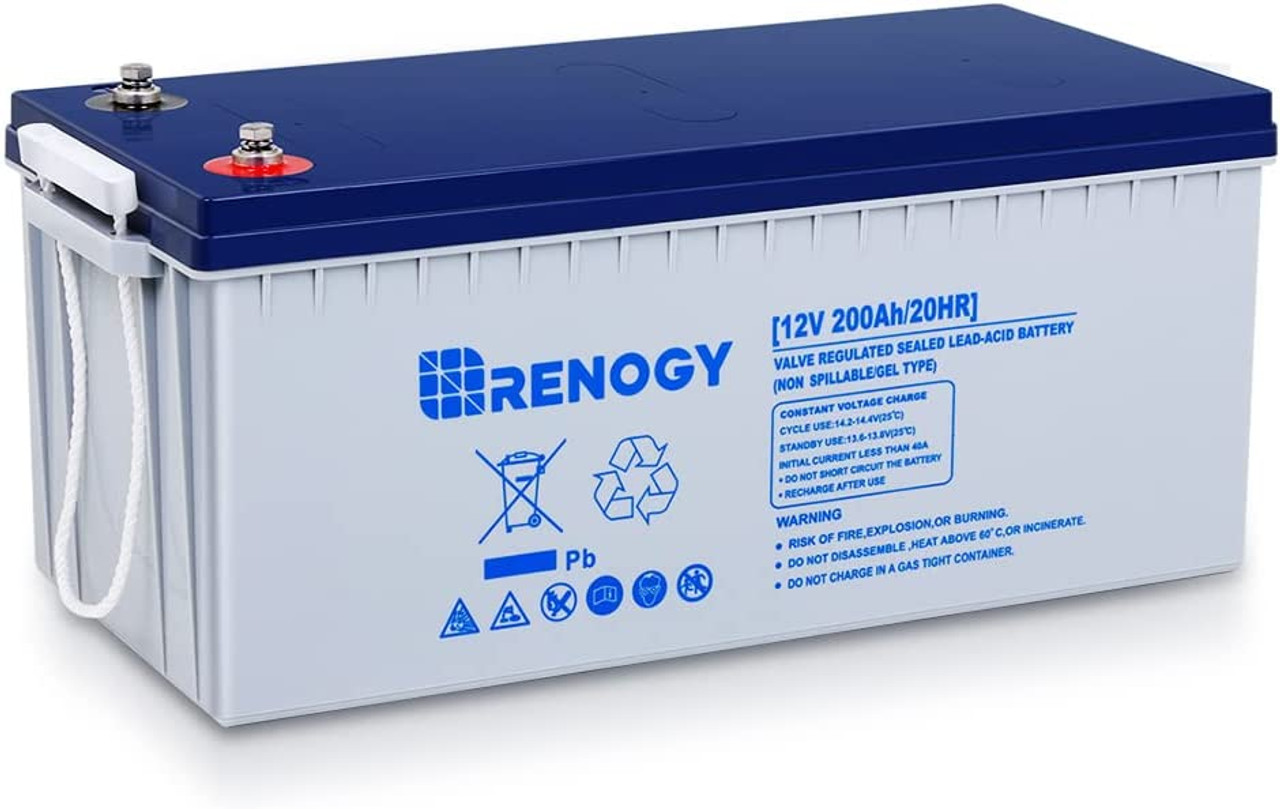
How to Tell If a GEL Battery Is Bad and How to Test GEL Batteries?
June 6th 2023
This troubleshooting guide applies to the following products:
 Deep Cycle Hybrid GEL Battery 12 Volt 100Ah View more
Deep Cycle Hybrid GEL Battery 12 Volt 100Ah View more  Deep Cycle Hybrid GEL Battery 12 Volt 200Ah View more
Deep Cycle Hybrid GEL Battery 12 Volt 200Ah View more
GEL Battery Problems
Common problems of GEL (Absorbed Glass Mat) batteries are:
- Battery not holding charge
- Battery cannot be fully charged
- The battery cannot maintain its charge
How to Tell If a GEL Battery Is Bad?
For common problems with GEL batteries, we can usually determine the health of the battery by measuring its voltage and inspecting the battery temperature. Please refer to the troubleshooting steps corresponding to each specific problem for more details.
How to Test GEL Batteries?
The following are common issues and corresponding troubleshooting methods for GEL batteries.
GEL Battery not holding charge
Troubleshooting steps:
- For GEL batteries, it is important to avoid long-term storage without routine charging, discharge currents exceeding the maximum allowable current, and discharge depths exceeding 50%. These situations may cause the battery not holding charge. In addition, the battery's aging due to too many cycles or too many years of use may also lead to the inability to charge.
- Confirm the ambient temperature where the battery is located. It may be too low or too high, exceeding the allowable charging temperature range of the battery (please refer to the battery specifications for details), which can cause the battery not holding charge.
- Verify whether the charging parameters of the charger are consistent with the battery parameters (as shown in the figure below). If they are inconsistent, it may cause charging issues. Check whether the charger has a charging voltage temperature compensation function (the compensation coefficient needs to be consistent with the GEL battery's temperature compensation coefficient). Additionally, a cross-validation test of the battery or charger can be performed to confirm if the charger or battery is the problem.
- If the above steps are still unable to confirm whether the battery is faulty, please contact Renogy for further assistance and provide the results of the above troubleshooting steps along with any related videos.

GEL Battery cannot be fully charged
Troubleshooting steps:
- For GEL batteries, it is necessary to avoid situations such as long-term storage without routine charging, discharge current exceeding the maximum allowable current of the battery, and discharge depth exceeding 50%, which may cause the battery cannot be fully charged. In addition, exceeding the battery's usage life and too many cycles can also cause aging and prevent the battery from being fully charged.
- Confirm the environment temperature where the battery is located, it may be too low/high and exceed the permissible charging temperature range of the battery (specifically refer to the battery specification), which may prevent the battery from being fully charged.
- Check whether the charging parameters of the charger are consistent with the battery parameters (as shown in the figure below). If they are not consistent, it may cause the problem of the battery not being fully charged. Also, check whether the charger has a charging voltage temperature compensation function (the compensation coefficient needs to be consistent with the GEL battery's temperature compensation coefficient). Furthermore, a cross-validation of the battery or charger can be performed to confirm whether the charger or battery has a problem.
- If the battery's problem still cannot be confirmed according to the above steps, please contact Renogy for further assistance and provide the above troubleshooting results and relevant videos to Renogy for further confirmation.

GEL battery cannot maintain its charge
Troubleshooting steps:
- For GEL batteries, it is necessary to avoid situations where the battery is left uncharged for a long time, discharge current exceeds the maximum allowed current, and discharge depth exceeds 50%, as these may cause the battery to lose the ability to maintain its charge. Additionally, exceeding the battery's lifespan or the number of cycles may cause the battery to age, leading to the battery to lose the ability to maintain its charge.
- Check the environmental temperature where the battery is located, as it may be too low/high, exceeding the battery's allowable charging temperature range (refer to the battery specification for details), causing the battery's available capacity to be significantly less than the available capacity at the standard temperature of 77℉.
- Check if the charging parameters of the charger are consistent with the battery parameters (as shown in the figure below). If they are not consistent, it may be that the battery is not fully charged, and it is mistakenly thought to not maintain its charge.
- If no problem is found according to the above steps, the battery can be connected to a resistive load (such as an electric water heater) for continuous discharge until the battery is completely discharged, and the discharge time is recorded. Calculate the battery's capacity based on the load power and discharge time, and compare it with the rated capacity.

Poor appearance of GEL battery
Troubleshooting steps:
- If you find that the GEL battery appears to have physical damage after receiving the product, it may be due to violent transportation by the shipping provider, resulting in external damage. Please check if the packaging box is damaged or has impact marks, take photos, and contact Renogy for handling.
- If the battery swells or leaks, please confirm whether the charger model and charging parameters are consistent with the GEL battery charging parameters (at 77℉) shown in the figure below, and check whether there is a short circuit in the system wiring. Please provide Renogy with the charger model and charging parameter information, as well as the physical wiring diagram of the system for further analysis.

Still have problems?
Get additional support with our customer support












